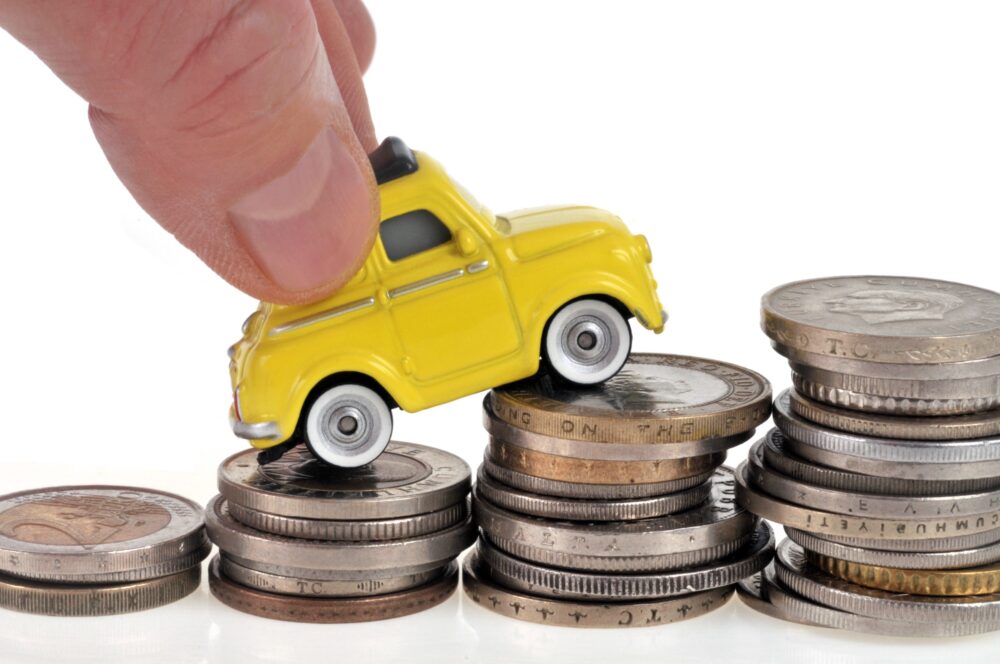Budgeting
How to Save Money on Transportation: 10 Tips for Reducing Your Car Expenses and Commuting Costs

Car expenses and commuting costs can take a big bite out of a household’s budget, particularly when inflation is an issue. Fortunately, there are some simple ways to limit how much you spend, allowing you to balance your budget with greater ease. Here are ten tips to reduce car expenses and commuting costs.
1. Participate in a Carpool
Carpooling is a classic way to significantly reduce the cost of your commute. It allows everyone that’s participating to essentially split the related expenses, either by each person paying a portion of what the driver spends or by only driving on specific days.
If you take part in a two-person carpool, you could potentially cut your commute costs by half. If you have a five-person carpool, you may only spend one-fifth of what you typically would.
It’s also wise to see if your company has a vanpool program. Some larger employers do offer vanpools as a perk, and the cost of participating is usually either very low or completely free. You can also check with your local transit agency, as some administer vanpool programs, too.
2. Check Your Benefits
Along with the vanpool perk mentioned above, employers often offer commuting-related benefits. For example, they may cover the cost of public transit passes – either wholly or partially – allowing you to take advantage of a low-cost transportation option that doesn’t involve wear and tear on your vehicle. You may be eligible for other benefits, too, such as parking or toll road passes.
It’s also wise to check for transportation-related reimbursements. For example, if your employer doesn’t offer parking passes, they may have a perk that reimburses you for those costs.
3. Use Public Transit
Even if your employer doesn’t subsidize public transit passes, using public transit typically costs much less than driving your own vehicle. You aren’t dealing with the cost of gas and reduce wear-and-tear on your car, both of which result in a savings.
Plus, public transit can reduce the stress associated with your commute, as you never have to worry about handling the driving. It could also give you time for relaxing activities like reading.
If you want to save the most money, look for monthly or annual passes. Generally, these cost far less on a per-day basis than paying every time you ride, making it worth the upfront investment.
4. Ride a Bike or Scooter to Work
If you live close to your workplace, consider biking or riding a scooter to get to work. Again, these are low-cost options since they don’t rely on gas or result in wear and tear on your vehicle. Even electric bikes or scooters result in a cost-savings over time, and those don’t require you to work up a sweat during your commute.
Another benefit of using an electric bike or scooter is that you may be able to charge them while you’re at work. If so, you reduce how much you’ll need to recharge them at home, which can also result in a modest savings.
5. Maintain Your Car
Whether you’re commuting to work or running errands, having a well-maintained car makes a difference. For example, properly inflated tires help you attain better fuel efficiency, which can help you get more miles out of every tank.
Keeping the interior of your car cleaned up and free of unnecessary items can also improve fuel efficiency. Anything sitting in your vehicle makes it heavier, and weight does impact your gas mileage. As a result, cleaning out your car on a regular basis can ensure that you aren’t hauling more than is necessary when you’re on the road.
6. Improve Your Driving Habits
How you drive has a significant impact on your gas mileage and can also impact the wear on your tires and other vehicle components. Make sure to avoid hard braking or sudden and rapid acceleration. Choose routes that limit the need to stop and go as you drive to and from work, and maintain enough space between you and other vehicles to make sudden stops less necessary.
Finding ways to avoid unprotected left turns can also help. Idling while you wait for an opening can waste fuel, so selecting a path that doesn’t involve unprotected lefts can work to your benefit. Finally, make sure to follow the speed limit.
7. Find Fuel Savings
There are many ways to reduce the cost of fuel when you need to fill up. Apps like Gas Buddy can help you find lower-cost fuel stations, and they’re free to use. You can also sign up for rewards programs through fuel stations and specific grocery stores, allowing you to earn points that can lead to discounts at the pump.
In some cases, using a gas rewards credit card or a credit card that offers cash back on fuel purchases can also work well. However, you need to pay those balances off in full to achieve a financial benefit, as interest rates can often offset any savings.
9. Consider Fuel Efficiency
When you’re buying your next car, factor fuel efficiency into the equation. Choosing a vehicle with better fuel efficiency can result in long-term savings, allowing you to spend less on gas the entire life of the car when compared to a less efficient vehicle.
Additionally, if you and your spouse both commute to work, factor in fuel efficiency when deciding which person drives which car. By having the person who commutes the farthest take the more fuel-efficient vehicle, you’ll save money in comparison to doing it the other way around.
9. Ask to Work from Home
If you’re in an office position, telecommuting, even on occasion, can reduce your transportation costs. Any day you’re not commuting means less gas is used and less wear and tear on your vehicle. As a result, the ability to work from home, even one or two days per week, can make a significant difference.
10. Explore Alternative Work Schedules
If telecommuting isn’t an option, see if your employer would allow alternative work schedules. By starting and ending your day outside of the traditional rush hour, you can avoid stop-and-go traffic and other issues that harm fuel efficiency. By working a compressed schedule – such as four 10-hour days instead of five 8-hour days – you can eliminate some commuting days, too. As a result, alternative schedules in nearly any form can provide a money-saving benefit.
Do you have any other tips that can help people reduce car expenses and commuting costs? Have you tried some of the tips above and want to let others know how much you saved? Share your thoughts in the comments below.
Read More:
- Here’s the Real Reason Used Car Prices Are Dropping
- Price of Gas Pushed by Supply, Demand, Cartels, and Seasonal Change
- 9 Financial Mistakes to Avoid After a Car Accident
Come back to what you love! Dollardig.com is the most reliable cash back site on the web. Just sign up, click, shop and get full cash back!
Read the full article here

-

 Side Hustles6 days ago
Side Hustles6 days agoWhy the Best CEOs Think Like Anthropologists
-

 Make Money7 days ago
Make Money7 days agoEarn More in 2025: Top 10 High-Yield Savings Accounts Revealed
-

 Side Hustles4 days ago
Side Hustles4 days agoThis User-Friendly H&R Block Software Package is Only $40, While Supplies Last
-

 Side Hustles7 days ago
Side Hustles7 days ago10 Roles That Are Surprisingly Well-Suited for Outsourcing
-

 Side Hustles7 days ago
Side Hustles7 days agoWhat to Do If TikTok is Banned — How to Protect Your Brand
-

 Passive Income7 days ago
Passive Income7 days agoHow Pets Can Promote Better Health and Well-Being in the Workplace
-

 Investing4 days ago
Investing4 days agoTikTok faces US ban deadline as users brace for fallout By Reuters
-

 Personal Finance7 days ago
Personal Finance7 days agoBiden cancels more student loans with one week left to his term


















